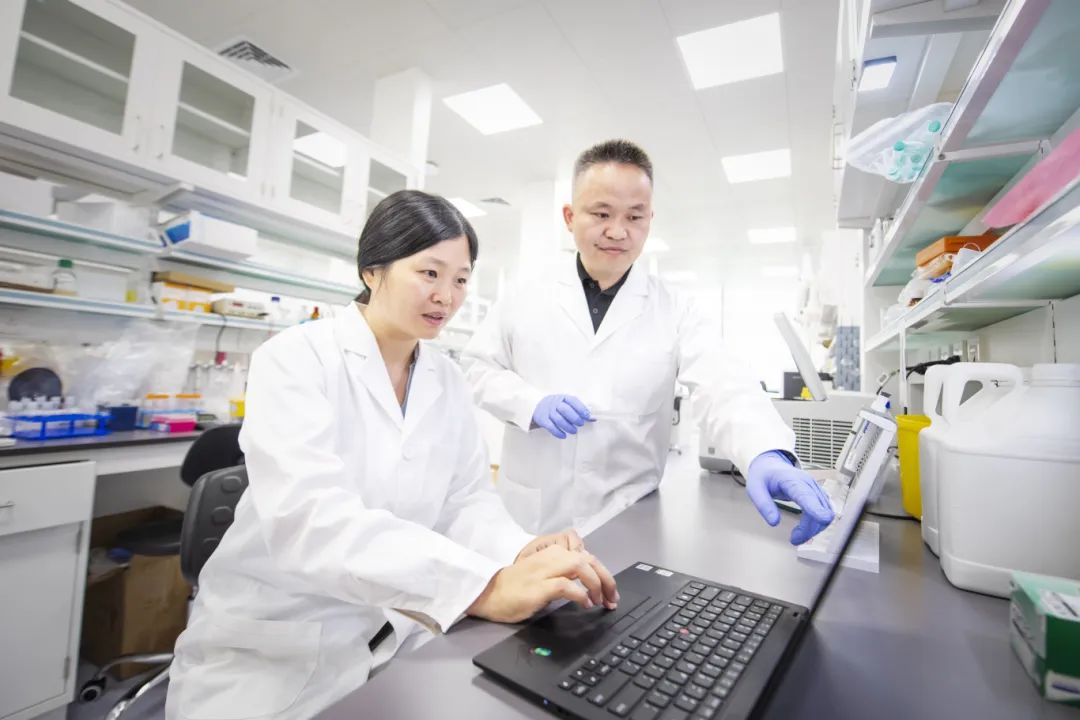

"HPV may cause cancer", "About 98% of cervical cancer cases among women in China are caused by high-risk HPVs", and "There is currently no specific medicine for HPV infection"... In recent years, human papillomavirus (HPV) has been one of the top trending searches, which has aroused concern among the public, especially women.
Therefore, how to speed up the research and development of HPV genotyping detection kits is always a top priority for HUANG Baicheng, a senior research specialist at the Research Center for Life Sciences Computing of Zhejiang Lab (ZJ Lab).
Recently, thanks to the latest design algorithm model for CRISPR-based detection of nucleic acids generated by ZJ Lab's open computing platform for life sciences, HUANG Baicheng and his team members have shortened the kit development cycle from over 3 months to 1-2 weeks, significantly improving test efficiency and quality, and contributing to clinical medical practice.

AI-Generated Photo
This computing platform, which has made great contributions to the Lab's research, was independently developed by the Research Center for Life Sciences Computing, and provides features such as data services, computing services and experiment management services. So far, more than 340,000 tasks have been accomplished via the platform.
The platform boasts a protein language model with tens of billions of parameters and associated life science algorithms and analytics tools. The former is a base model trained on 600 million protein parameters using deep learning technology, which can "decode" life language and dream up proteins, and it has offered computing services to life science research institutions and healthcare enterprises. The latter contains more than 20 algorithmic tools and is world-leading in terms of performance, and it has been adopted by hundreds of partners at home and abroad.
In terms of the development of applications, the platform has a CRISPR-based detection technology with independent intellectual property rights, CRISPR-based intelligent nucleic acid detection products, as well as a series of novel functional proteins that exhibit activity in laboratory tests. HPV genotyping can also be performed using this platform.

HUANG Baicheng (right) and GUO Ling (left) are performing HPV genotyping in an open life science laboratory.
Before the establishment of this platform, HUANG Baicheng joked that he did research like in a "primitive workshop in the farming days": "In the past, an 'exhaustive screening' approach was generally used in nucleic acid detection, that is, to select an optimal guide sequence manually from hundreds of candidate DNA/RNA sequences through wet-lab experiments, requiring a long cycle and a lot of manpower and financial resources. Additionally, conventional nucleic acid tests require professional equipment such as nucleic acid amplification instrument and its operating environment, which costs a lot of money."
GUO Ling, an engineering expert at the Research Center for Life Sciences Computing, said that IT (Information Technology) and BT (Bio-technology) are integrated into an optimization model to simulate the binding effect between target DNA and candidate guide RNA sequences in CRISPR-based virus detection by means of "computing + data + model" and relying on high-quality wet-lab experiment datasets and algorithms, and to select an "optimal" guide sequence for detection from a large number of candidate sequences. "Intelligent computing empowers life science research, which will help us save at least 90% of the R&D time and greatly expedite the R&D process, and facilitate the timely development of products."
At present, the kit can detect six high-risk HPV subtypes. In the future, we will further expand the range of detection based on intelligent computing and clinical requirements, and ultimately achieve thorough, accurate and rapid virus detection.
"We want to generate or design biomacromolecules with foundation models, so that biologists can perform biology-oriented synthesis in a lab environment. This reduces the cost of experimentation, accomplishes new discoveries in life sciences, and also effects a paradigm shift from laboratory screening to the generation of arguments," said CHEN Guangyong, Deputy Director of Research at the Research Center for Life Sciences Computing. It is learned that the open computing platform for life sciences has supported scientific research in universities such as ShanghaiTech University, Nanjing Normal University and Zhejiang University, and provided computational methods for the research on PET plastic degrading enzymes, malate dehydrogenase and broad-spectrum antibacterial peptides, etc. Next, we'll leverage the platform to drive a paradigm shift in life science research from laboratory screening to the generation of arguments, so as to make innovation in life sciences more efficient and cost-effective, forming a thriving ecosystem of applications for the life and health industry.











